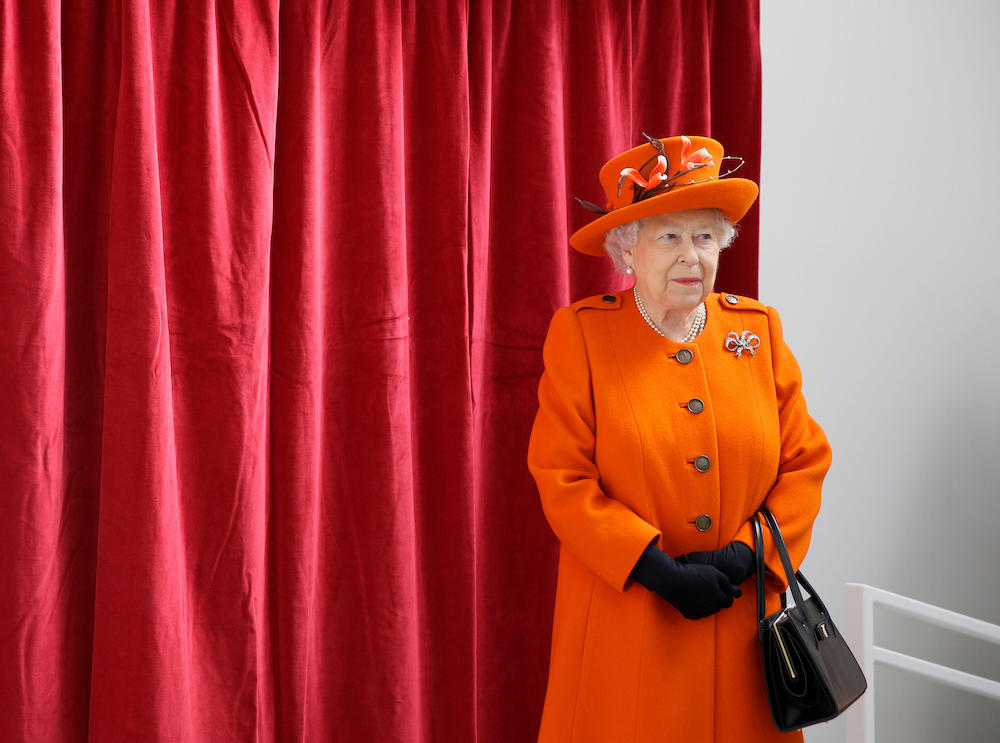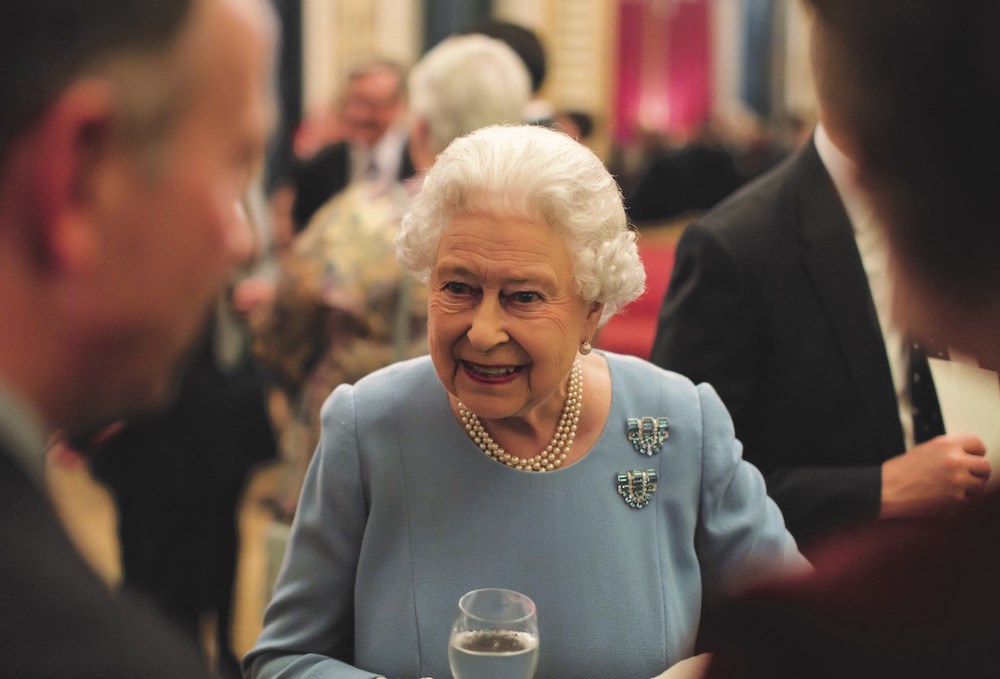Queen Elizabeth II received a Red Box almost every day for over 70 years, with documents including policy papers, cabinet minutes, Foreign Office telegrams, and a daily summary of events in parliament.
She was known as an assiduous reader of those boxes, with a keen memory for details – so much so that, according to lecturer at King’s College London and No.10 researcher in residence Michelle Clement, Harold Wilson would “often remark that a prime minister had to do their homework ahead of an audience with the Queen, or she was likely to catch them out”.
Wilson was the fourth of 15 prime ministers who served under Queen Elizabeth II and their lengthy weekly audiences were taken as a sign of mutual respect. His return to office in 1974 followed perhaps the best-known example of the important, but informal, connection between top officials in government and Buckingham Palace.
Wilson’s predecessor Edward Heath had called an election at the start of the year, which returned a hung parliament. Heath did not immediately resign, seeking instead to form a government with the support of the Liberal party. When these negotiations failed, Heath stepped down and the Queen invited Wilson to form a government. He did so, and within a few months called another general election in which he secured a (small) majority that enabled him to continue as prime minister for five years.
“There is a mystique about the Golden Triangle, which gives an impression of an arm’s-length relationship between the two institutions, but there are many ways in which the civil service is connected to the monarchy”
As the political discussions took place over a tense weekend in March, cabinet secretary John Hunt and the Queen’s private secretary Martin Charteris, supported by the PM’s principal private secretary Robert Armstrong, were quietly teasing out the constitutional principles and procedures that should be followed.
Hunt, Charteris and Armstrong formed what is known as the “Golden Triangle” which connects the Queen as head of state to the head of government. On discreet walks through St James’s Park, or chatting in their quiet offices, they ensured the monarch would not be put into a tricky constitutional position, whether by seeming to intervene in a political process or by being asked to agree to a new election too quickly.
The memo which Armstrong wrote at this time would later be pored over by his successors Jeremy Heywood and Gus O’Donnell when, alongside Charteris’s successor Christopher Geidt, they helped steer the Queen and politicians through another hung parliament in 2010. And after Theresa May’s 2017 election returned a minority government, Geidt was once again working with Heywood (by that time the cabinet secretary), moving temporarily into a small room near Heywood’s in the Cabinet Office so that he was on hand to offer advice and provide that golden thread connecting the Queen and her government.
While most examples of this connection revolve around keeping the Queen out of politics, the relationship between key officials may also have proved useful at other key moments.
Catherine Haddon, senior fellow at the Institute for Government, points to the days after the death of Diana, Princess of Wales as an “acute political moment for Tony Blair, and a famous case of a politician intervening in the working of the Palace”. While some of the key discussions were direct between Blair and members of the Royal Family, a lot of the handling of the situation was through officials and advisers from government and the palace working together.
Haddon notes that Liz Truss, prime minister for less than two days before the Queen’s death, will be benefitting from the fact that her cabinet secretary Simon Case worked for the Royal Family as Prince William’s private secretary, and will therefore have good relationships with key individuals in the Family as well as their courtiers.

Yet it would be a mistake to think that Queen Elizabeth’s connection to the civil service was limited to these high-level relationships. “There is a mystique about the Golden Triangle,” says Haddon “which gives an impression of an arm’s-length relationship between the two institutions, but there are many ways in which the civil service is connected to the monarchy, from the mundane to the high constitutional.”
Teams in No.10 and the Cabinet Office, including the Privy Council Office, deal with the palace the most often – and No.10 keeps a close watch on most of these communications to ensure that they are handled appropriately. But there are teams across the civil service whose work connects with the Royal Family in different ways. The Crown has different connections in the devolved administrations, for example, while FCDO teams will work on Royal Tours and state visits. Then there are the various departmental teams who are responsible for championing and collating nominations for an honour in one of the monarch’s twice-yearly lists.
There are also officials across government whose work may end up in a Royal Red Box. Former senior civil servant and IfG programme director Alex Thomas remembers the “frisson” of knowing that certain pieces of work may end up on the monarch’s desk, or of recognising that the Queen was somewhere awaiting the arrival of bills that needed Royal assent – as late into the night as needed. Her involvement in government work may be largely formal, but she still plays an active role, he notes. “During a reshuffle, for example, you need to make sure that the palace and the Queen are teed up. You can’t just say ‘Her Majesty has been pleased to approve the following appointments…’ she does actually have to approve them.”
"There is a sense in which you see yourself as part of the same system that the Queen sat on top of"
Touchpoints between the civil service and the monarchy range from this grand work to the more arcane, Thomas recalls. In one role he oversaw the team charged with approving the use of Royal names and symbols. This involved politely declining one company’s request to name an oven after Princess Beatrice, and writing to an Italian hotel which had decorated its swimming pool with a mosaic of the crown worn by the Queen at her coronation. The hotel never replied to the letter, though Thomas later learnt the mosaic had been removed.
Clearly the Queen had no personal role in these examples, but there were plenty of ways in which those daily boxes were just the iceberg’s tip of her official work. As head of state, Queen Elizabeth played a crucial diplomatic role – she is described in a tribute from Lord Simon McDonald as the “UK’s top diplomatic asset”, her visits the “defining moments in the UK’s relations with every country she visited” (see p.9). As such, her regular schedule of tours and state visits was carefully planned by the Foreign Office, No.10 and the Palace. There are many stories of her charming dignitaries from across the world, sometimes navigating choppy diplomatic waters with skill borne of many years of experience.
While we have recollections and stories from these public events, it is rarer to read about her interactions with civil servants. It seems, from what we do know that she did develop a personal connection with senior officials she saw regularly.
Lord Butler, for example, served as cabinet secretary during some of the trickiest years of the Queen’s reign in the 1990s. Her regard for him was demonstrated in 2003 when he was made a member of the Order of the Garter, an honour in the monarch’s personal gift which usually reflects a particular service to the throne. The Queen was also said to have shown personal and genuine concern for Jeremy Heywood when he became gravely ill in 2018. 
In tributes given to CSW, Lord Sedwill describes the “unique blend of wisdom, warmth and wit” apparent at his meetings with her while Lord McDonald describes his admiration for her growing as he met her regularly through his time at the Foreign Office.
In 2010, the Queen visited the Cabinet Office to show her gratitude to civil servants who had supported coalition negotiations while keeping the Crown away from politics. She made similar visits to other departments after key occasions, in part reflecting her belief that her job was to be seen, but also her desire to recognise public service – a desire also shown by the many civil servants who were invited to join the regular garden parties at Buckingham Palace.
In these visits the Queen impressed even the most senior officials. O’Donnell recounts that the permanent secretaries of 2010 – including one Keir Starmer, then head of the Crown Prosecution Service – made a particular effort on the day she attended Wednesday Morning Colleagues. After that meeting she not only agreed to but – as O’Donnell recounts – actually suggested hosting the Civil Service Awards at Buckingham Palace.
There is, Thomas suggests, an “affinity” between the monarch and the civil service. “There is a sense in which you see yourself as part of the same system that the Queen sat on top of,” he told CSW, adding that “without getting too overblown, there’s a parallel between the stewardship of the state and the country that the monarchy is charged with and the stewardship of effective government, giving good advice to ministers, keeping the show on the road, that should be part of the civil service’s job.”
Writing in a blog for the Institute of Government, Thomas elaborated on this parrallel, saying: “Both the monarch and the civil service can shape but not control decisions.
“They have framing power, soft power, to set some of the terms of debate and decision. Institutional scepticism can tease out problems and mean policy decisions are better made. Neither can speak back. And ultimately both are rightly servants of democracy and the law.”
Thomas also noted that our current system of government does not support the stewardship role of the civil service, concluding "this should change".
"Stewardship is a responsibility all public servants should be able to exercise with more confidence – but, for now, that is not really how our civil service works," he said. Thomas concluded that although the Queen "may have been a very different public servant to [civil servants] the lessons from her 70-year reign should be taken seriously – especially after the last few years of turbulence in His Majesty’s Government."
As the country marks the death of a sovereign who, through years of visits and Christmas broadcasts, became something of a national grandmother. Civil servants may well be reflecting on her life as a lynchpin of the constitution. She was a working head of state who performed her duties with careful discretion, and dedicated public servant who constantly, quietly, lent her support to civil servants.